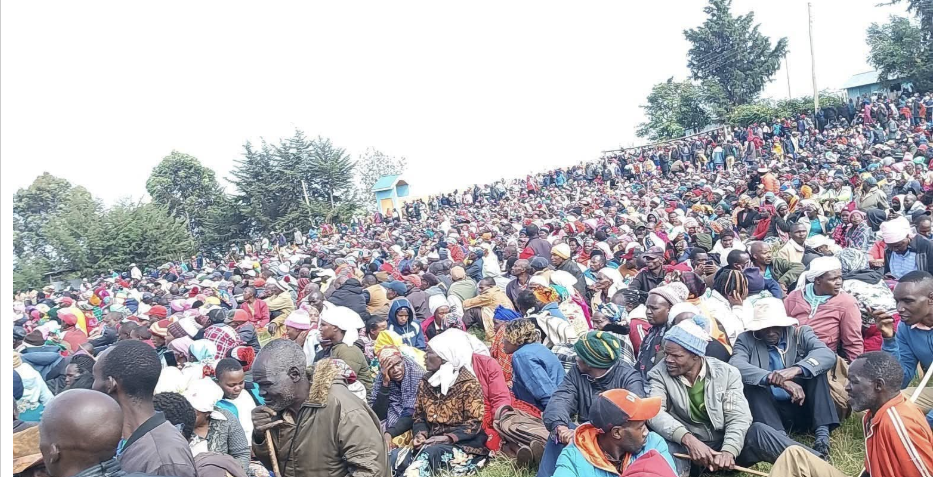
 A section of residents during the registration exercise on September 19, 2025/COURTESY
A section of residents during the registration exercise on September 19, 2025/COURTESY
Residents of Narok evicted six years ago from the Mau forest may finally breathe a sigh of relief, and perhaps smile their way to the bank, after the government moved to capture and verify all those affected.
The exercise follows a pledge by President Ruto on May 7, during a development tour of Narok South, where he acknowledged the suffering the families had endured since their eviction.
“I have spoken with leaders from this area, and we have agreed on the way forward,” Ruto said during the event.
"We agreed that no one will return to the forest; the task now is either to resettle you elsewhere or offer compensation. There are only two options."
The Head of State directed Interior Principal Secretary Raymond Omollo to collaborate with the area Deputy County Commissioner and local chiefs to draw up a verified list of legitimate claimants.
He assured residents that the process would be transparent and no rightful beneficiary would be excluded.
The week-long process, conducted by chiefs under the supervision of Narok County Commissioner and Narok South Deputy County Commissioner, wrapped up last Thursday.
It was carried out across all villages in the region.
Over 14,000 people are reported to have been successfully vetted, with authorities insisting that only genuine victims were included to lock out impostors.
"The number is high, but we have conducted a thorough vetting because this is purely for those who were evicted," said an official aware of the process.
While it remains unclear how much each individual will receive in compensation, the development signals a major breakthrough in a matter that has been marred by politics and controversy for over a decade.
"We have waited for long, but we are happy the government has finally honoured its promise. We are only waiting for the funds," said one of the evictees.
The Mau evictions have historically been a sensitive and divisive issue.
Thousands of families were forced out in successive government operations, many left landless and dependent on relatives or well-wishers.
The crisis has frequently been used as a political bargaining chip, with leaders making contradictory promises of resettlement in the forest or allocation of land elsewhere.
In 2008, the government intensified the eviction drive, targeting settlers accused of illegally acquiring land in the water tower.
Among those affected were members of the indigenous Ogiek community, who have long claimed ancestral rights to the Mau.
In 2017, the African Court on Human and Peoples’ Rights ruled in favour of the Ogiek, declaring that Kenya had violated their rights to land, religion, culture, and development.
The court ordered the state to issue the community a collective land title and pay $1.3 million (Sh167.7 million) in compensation.
Despite the ruling, enforcement has been painfully slow, and fresh waves of evictions have continued.
The second major wave came in August 2019 when the government issued a 60-day vacate notice to occupants of the Maasai Mau.
But the directive was executed abruptly, just a day later, sparking criticism over due process.
Then Rift Valley Regional Coordinator George Natembeya defended the action, stressing the need to restore the forest’s ecosystem and warning against resettlement within 10 kilometers of the cutline to prevent re-encroachment.
For years, thousands of the evictees have lived in limbo, unsure of when or whether they would be resettled.
Many accuse successive administrations of turning their plight into campaign rhetoric, particularly in the run-up to the 2022 General Election.
The registration process now rekindles hope.
Ruto had earlier stated that his administration had already disbursed compensation to about 2,000 individuals.
If implemented fully, the initiative could end one of the most politically charged land questions in Kenya’s recent history, restoring dignity and stability to families that have endured displacement for far too long.












